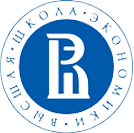In his study “Obesity of politicians and corruption in post-Soviet countries”, Pavlo Blavatskyy analysed 299 face images of high-ranking officials from 15 post-Soviet countries. For each image, the minister’s body-mass index was estimated using a computer vision algorithm.
This algorithm, previously developed by a team of researchers lead by Enes Kocabey, assesses each image in two stages: in the first stage, a deep neural network extracts the features for the input image; in the second stage, it associates recognized faces with body-mass indexes, classifying individuals into categories: underweight, normal, overweight or obese.
The study covers 2017 cabinet ministers of Armenia, Azerbaijan, Belarus, Estonia, Georgia, Kazakhstan, Kyrgyzstan, Latvia, Lithuania, Moldova, Russia, Tajikistan, Turkmenistan, Ukraine and Uzbekistan. However, the final publication does not contain all the images processed by the algorithm, but only the pictures of the ministers with the median estimated body-mass index.
The study showed that 13 out of 299 (4%) are obese, 96 (32%) are overweight, only 10 (3%) have normal weight, whereas no one is underweight.
Additionally, Blavatsky compared the politician’s median weight with the position of respective countries in different 2017 corruption rankings, including the TI Corruption Perceptions Index, the Control of Corruption Indicator of the Worldwide Governance Indicators of the World Bank, the Index of Public Integrity of the European Research Centre for Anti-Corruption and State-Building, the “Absence of corruption” sub attribute of the Global State of Democracy of the Institute for Democracy and Electoral Assistance, and the Anti-Money Laundering Index of the Basel Institute on Governance.
The study showed a clear positive correlation between the weight of officials and the level of corruption: the higher the median weight of national politicians was (meaning that each minister was more corpulent), the worse the placement of the country was in the rankings.
For instance, according to different indexes, the most corrupt post-Soviet countries are Turkmenistan, Tajikistan and Uzbekistan; according to the findings of the study, the ministers with the highest median body-mass index live in Uzbekistan, Turkmenistan and Ukraine. Explaining a certain mismatch of the three outsiders, Blavatskyy asserts that the findings of his analysis can be used by experts to correct the perceptions of the real level of corruption. In particular, the level of political corruption in Ukraine can be underestimated, whereas in Tajikistan, on the contrary, it may be overestimated.
The author also compared the median weight of ministers with the average weight of the population of each country, assuming that the high rates of overweight among officials can be explained by a generally substantial level of obesity in the respective country. However, the analysis demonstrated that in this case there is a slight inverse relationship: the countries with relatively overweight cabinet ministers tend to have a population that is less inclined to obesity. To his surprise, the author finds out that political corruption turns to be useful for public health: in more corrupt countries where politicians are overweight the level of obesity is lower, whereas in relatively less corrupt countries where politicians are slimmer the electorate, on the contrary, is more likely to suffer from obesity.
Previously, Blavatskyy had used the same algorithm to explore the link between the level of corruption and politicians’ obesity in Ukraine. In that case, he had compared the ministers’ median weight with the Control of Corruption Indicator of the Worldwide Governance Indicators of the World Bank, and the discrepancy between the quantity of luxury wristwatches exported from Switzerland to Ukraine (reported by Swiss statistics) and the corresponding quantity imported by Ukraine from Switzerland (reported by Ukrainian statistics).
*The Ig Noble Prize, whose name is a pun on the Nobel Prize and on the word ignoble or “not noble”, parodies the Nobel Prize and “honors achievements that first make people laugh, and then make them think”. The Ig Nobels were created in 1991 by the Annals of Improbable Research, a satirical magazine. Its laureates receive an award of ten trillion of Zimbabwean dollars which is roughly a US dollar.
In 2021, besides Blavatskyy, the prize was awarded for the analysis of variations of cat communication, the relation between the odors the audience produces and the film it is watching, the effect of orgasms on nasal breathing, the possibility to more safely transport an airborne rhinoceros upside-down, the hypothesis that humans evolved beards to protect themselves from punches to the face and other pressing issues of global concern.

